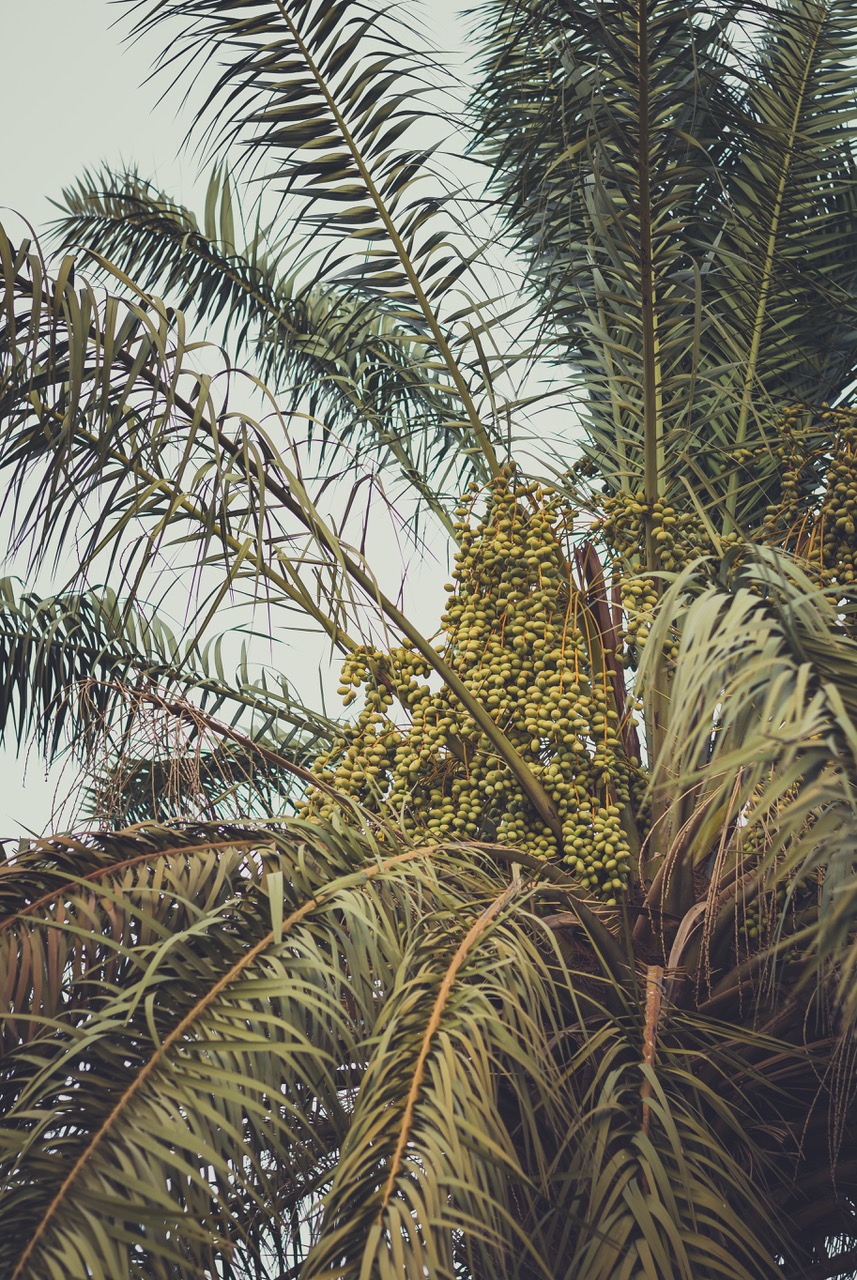I remember that when I was a child, we tried to grow date palms from the pits or seeds in the fruit. None ever germinated. But that was then and time has passed. When we had fresh dates (with seeds inside) at Christmas a few years ago, I decided to try again. Accordingly, I took a deep margarine tub, punctured several holes in the bottom to drain out water, and filled it with good potting soil. Then each day, as the dates were consumed, I tucked their seeds into the soil. Maybe twenty or more seeds went into the pot. And nothing happened. But I kept watering. Then after eight weeks or more, a pure white shoot about 2 mm in diameter finally appeared. It looked like a growing shoot from a corn seed, only thicker. Next day another shoot appeared. It took several days for these to turn green. Eventually we had five young seedings, each of which developed a bright green leaf. More leaves followed, one at a time. These plants are monocots, like corn and grasses and bamboo. That is why they send up only a single leaf at first.
When we went to put each seedling in its own pot, we discovered that the seed first produces a pure white fleshy root which grows “down to China” (possibly 15 cm or more) before a shoot ever appears above the soil. When I showed a teenager a picture of a date palm tree, he said “Good luck!” He did not think we would ever obtain a tree. Maybe not, but it would be fun to try. Date palms, you see, are very amazing plants.
Of all fruit trees, the date palm seems the most remarkable. Not only is the biology of this tree unusual, but its use extends back to the earliest historical records. As far as we know, this tree has always been cultivated by man. No wild populations have ever been located. The fact is, the date palm has such demanding requirements for growth, that it is difficult to imagine how these trees could survive on their own.
The Old Testament and New Testaments both contain numerous references to palm trees. Indeed this tree was eventually established in all the hot, dry regions around the Mediterranean. It is an interesting fact that these trees are difficult to grow successfully. They grow only in very hot, very dry climates. Nevertheless, they need a lot of irrigation water applied directly to their roots. Natural rain or a humid climate is enough to ruin the fruit crop which takes six months to ripen. Not only was ancient man able to consistently irrigate his trees, but he knew that the female flowers had to be hand pollinated, otherwise there would be no fruit. You have to be convinced that this is necessary before you will chinny high up a straight trunk to bring male flowers from one tree to the female flowers in another tree.
In addition, planting seeds is not the best way to obtain good new trees. Even the earliest palm growers knew about “vegetative propagation.” These people knew how to encourage the growth of offshoots at the base of good trees. They then cut off these heavy rootless cuttings [as much as 13-18 kg (30 – 40 pounds) each] and planted them with plenty of water and well-rotted manure. With camels around, apparently manure was readily available. All these techniques sound very modern, as indeed they are. But they were practiced long ago too.
Thus, dates are a crop which cannot grow without knowledgeable people. There was never a time when this plant lived in the wild. Palm trees need people to care for them. With every date you eat, remind yourself of this fascinating fact!
Reference: Hilda Simon. 1978. The Date Palm: Bread pf the Desert. Dodd, Mead and Company. New York. 158 pages.
For information on monocots see: www.create.ab.ca/dicot-dreamers-vs-monocot-meanies/#more-9541
Moxie
October 2019
Subscribe to Dialogue







